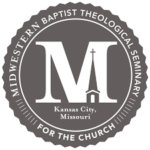During the Mosaic covenant era after Israel settled the promised land, Yahweh advanced his promise of a coming royal Savior by pledging to David an eternal kingdom (2 Sam. 7:8–16; 1 Chr. 17:7–14). While the narrative accounts do not call the event a “covenant,” other Scriptures do (2 Sam. 23:5; Pss. 89:3, 28, 34, 39; 132:12).
Biblical Foundations of the Davidic Covenant
Scripture progressively reveals Yahweh’s commitment to raise up a royal-priestly offspring to deliver the world. Yahweh commissioned the first couple to take “dominion” over the earthly sphere, thus showing that to be made in God’s “image” was to represent Yahweh’s kingship on the earth (Gen. 1:26, 28). Yet Yahweh also charged the man to “work and keep” the ground (Gen. 2:15), which signaled the priestly nature of his task (cf. Num. 3:7–8; 8:26; 18:7). The ideal human would be both king and priest. At the fall, the world’s hope turns toward the offspring of the first woman who would defeat the evil one, at great cost to himself (Gen. 3:15). He would, thus, do and be what the first Adam failed to do and be. We then learn that he would bring blessing to the nations, overcome enemy strongholds, receive the obedience of the peoples, and come from the lines of Shem (Gen. 9:26–27), Abraham (Gen. 17:6, 16; 22:17–18), Isaac (Gen. 17:19; 21:12; cf. Gen.26:3–4), Jacob (Gen. 35:11; Num. 24:17–19), and Judah (Gen. 49:8–12). He would lead a new exodus, overcome enemies, and bestow blessings (Num. 24:7–9). He would not multiply wealth, women, or war horses but would be a man who is guided by God’s word, who fears Yahweh and keeps his commands, who does not elevate himself above his subjects, and whose kingdom will last long (Deut. 17:14–20). His reign would curb the self-rule of God’s people (Judg. 21:25), be the means by which Yahweh would judge the ends of the earth (1 Sam. 2:10), and fulfill the hope for a faithful king-priest around whom Yahweh would build a sure house (1 Sam. 2:35; cf. Ps. 110:4; Zech. 6:12–13).1On the promise of a king-priest in 1 Sam. 2:10, 35, see Nicholas Majors, The King-Priest in Samuel: A Messianic Motif (Eugene, OR: Wipf & Stock, 2023). The Davidic covenant now reveals that God’s kingdom blessing would rest on David’s house and that the coming royal Son of God in David’s line would reign eternally (2 Sam. 7:16, 29).2For David as a type of this coming royal figure, see Jason S. DeRouchie, “The Heart of YHWH and His Chosen One in 1 Samuel 13:14,” BBR 24 (2014): 467–89; Brian A. Verrett, The Serpent in Samuel: A Messianic Motif (Eugene, OR: Resource, 2020); Majors, The King-Priest in Samuel.
The Nature of the Davidic Covenant
While describing his prior (2 Sam. 7:8–9) and subsequent (2 Sam. 7:9–11a; cf. Ps. 89:21–23, 27) accomplishments for David, Yahweh recalls the Abrahamic covenant, thus noting how what he was promising to do through David was fulfilling promises reaching back to Genesis. Yahweh then vows that after David’s death he would build David a “house/dynasty” (2 Sam. 7:11b–16). David’s biological descendant (“offspring”) would build a “house” for God’s name, enjoy a lasting kingdom, and be Yahweh’s royal son (2 Sam. 7:12–15). David’s house, kingdom, and throne would remain steadfast and established forever (2 Sam. 7:16). In response, David recognized that such promises bore hope and guidance for the world (2 Sam. 7:19), implying that through this covenant God would realize the global hopes set forth in the Abrahamic promises.3Walter C. Kaiser Jr., “The Blessing of David: The Charter for Humanity,” in The Law and The Prophets: Old Testament Studies Prepared in Honor or Oswald Thompson Allis, ed. John H. Skilton (Nutley, NJ: P&R Publishing, 1974), 298–318; William J. Dumbrell, Covenant and Creation: An Old Testament Covenant Theology, 2nd ed. (Milton Keynes: Paternoster, 2013), 230; Peter J. Gentry and Stephen J. Wellum, Kingdom through Covenant: A Biblical-Theological Understanding of the Covenants, 2nd ed. (Wheaton, IL: Crossway, 2018), 456–59. Thus, David’s final words before death unpack his confident longing for this Deliverer to work justice, overcome the curse, and establish a new creation (2 Sam. 23:3–7).4Verrett helpfully develops these topics in Verrett, Serpent in Samuel, 143–77.
Because of the royal son’s potential for sin (2 Sam. 7:14) and because Solomon was convinced that the temple he built fulfilled God’s promise that David’s son would build Yahweh’s “house” (1 Kgs. 8:18–20), Solomon initially and typologically fulfilled God’s promise of a royal son. Nevertheless, the Chronicler did not mention any potential for sin in his account of the Davidic covenant (1 Chr. 17:11–14), and this is likely because he wrote after the fall of the Judean kingdom when the only hope was on the eschatological Messiah. Significantly, even the initial promises made clear that Solomon’s reign was not the ultimate fulfillment, for Yahweh promised that the royal son’s throne would last forever (2 Sam. 7:13, 16). As with all royal grants, this promise of perpetuity was matched by the requirement that the king remain loyal to Yahweh (1 Kgs. 2:4; 8:25; 9:4–5; Ps. 132:12), something Solomon did not do (1 Kgs. 11:9–13). Hence, only a monarch with perfect obedience and an eternal reign could truly fulfill God’s Davidic promises. Such realities are manifest only through Christ Jesus in the new covenant (Isa. 9:6–7; 11:4–5; 50:5–9; 55:3; Luke 1:32–33; Acts 2:29–36).5Gentry and Wellum, Kingdom through Covenant, 459–80.
Throughout the Psalter, David portrays his hope in this coming king. Indeed, the royal psalms elevate how he would be Yahweh’s “begotten son” (Pss. 2:7; 89:27; cf. Acts 13:33; Heb. 1:5; 5:5), receive Yahweh’s everlasting blessing (Pss. 21:6; 45:2; cf. Ps. 72:17), fulfill the Davidic covenant promises (Pss. 89:28–37; 132:11–12, 17–18), and inherit both the nations (Ps. 2:8–9; cf. Rev. 5:9–10; 12:5; 19:15) and Melchizedekian priesthood (Ps. 110:1–4; cf. Heb. 5:6; 7:17-21).6J. Alec Motyer, Look to the Rock: An Old Testament Background to Our Understanding of Christ (Downers Grove, IL: InterVarsity Press, 1996), 23–38; J. Alec Motyer, “Messiah,” NBD 755–56; Jason S. DeRouchie, How to Understand and Apply the Old Testament: Twelve Steps from Exegesis to Theology (Phillipsburg, NJ: P&R Publishing, 2017), 64–65. This same figure, though, would triumph only through tribulation.7For more on reading the Psalms as direct prophecies of the eschatological Christ, see DeRouchie, How to Understand and Apply the Old Testament, 62–83.
Other Scriptural Reflections on the Davidic Covenant
The writing prophets identified the promised Savior of the Pentateuch and Former Prophets with David’s seed. He would be a child-king with divine identity, and his government and peace would have no end (Isa. 9:6–7). He would be a new David from Jesse’s stump, but he would also be Jesse’s root (Isa. 11:1, 10). Yahweh’s Spirit would rest on him, righteousness would characterize his reign, and he would lead a new exodus that includes both ethnic Israelites and some from other nations (Isa. 11:2, 5, 10–12:6; cf. Jer 23:5–8). Both foreigners and once-exiled Israelites will follow “Yahweh their God and David their king” (Jer. 30:8; Hos. 3:5; cf. Ezek. 37:24). Under his tent will be all the nations called by God’s name, and creation will flourish under his rule (Amos 9:11–15; cf. Acts 15:16–18), which will be from sea to sea (Zech. 9:10). Through his own substitutionary sacrifice, the many will be accounted righteous (Isa. 53:11–12) as his saving work cleanses from sin and uncleanness (Zech. 12:10; 13:1).
The New Testament stresses how Jesus is the Christ, fulfilling the promises made to both David and Abraham (Matt. 1:1). “He will be great and will be called the Son of the Most High. And the Lord God will give to him the throne of his father David, and he will reign over the house of Jacob forever, and of his kingdom there will be no end” (Luke 1:32–33; cf. Luke 1:68–75). Citing Psalm 16, Peter says of David, “Being therefore a prophet, and knowing that God had sworn with an oath to him that he would set one of his descendants on his throne, he foresaw and spoke about the resurrection of the Christ” (Acts 2:30–31). Jesus is the offspring whom God promised to sit on David’s throne. He was “descended from David, according to the flesh, and was declared to be the Son of God in power according to the Spirit of holiness by his resurrection from the dead” (Rom. 1:3–4). The author of Hebrews notes how Jesus ultimately realizes the prediction in 2 Samuel 7:14: “I will be to him a father, and he shall be to me a son” (Heb. 1:5). Jesus himself claims to be “the root and the descendant of David” (Rev. 22:16), which proves his authority and grounds believers’ hope.
Conclusion
The Abrahamic covenant anticipated a two-stage fulfilment, the second of which would include a single, male Deliverer from the line of Judah whose reign would extend Yahweh’s influence to the earth’s ends (Gen. 17:4–6; 22:17–18; 26:3–4; 49:8–10). The shift from Abraham’s fatherhood of one nation in the Mosaic era to many nations in a future era would mark a true progression in Scripture’s plotline that cannot be reversed. The Davidic covenant narrows the promise from Judah to the Davidic line and signals this progression. While Yahweh made the promises to David during the Mosaic administration, the covenant anticipates an ultimate fulfillment after this era through the eschatological Messiah, whom we now know as Jesus.






